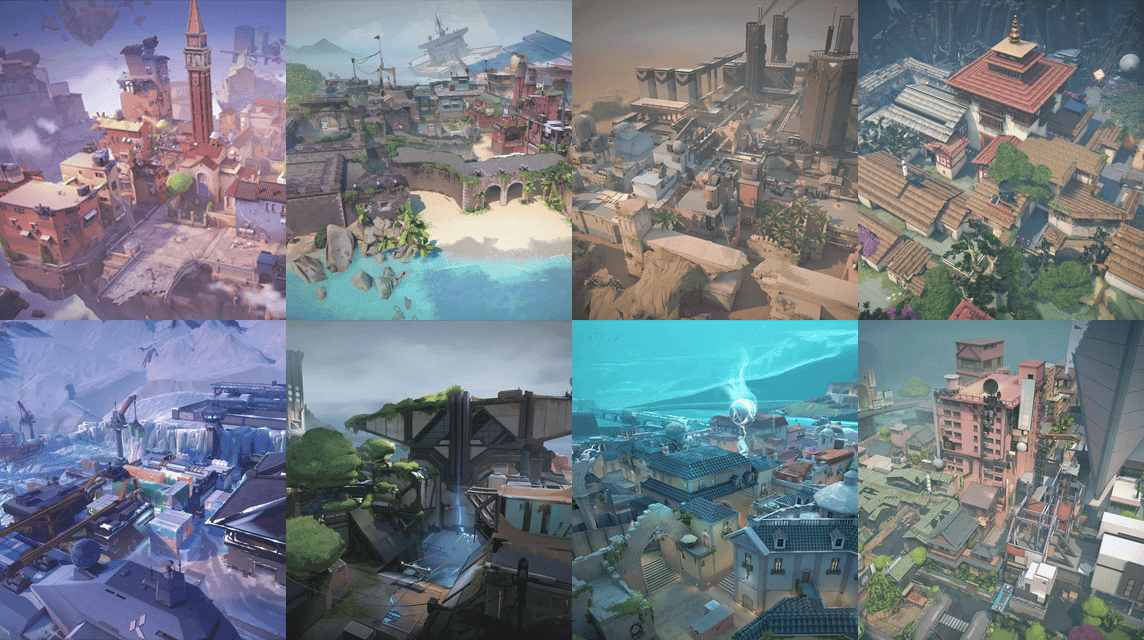

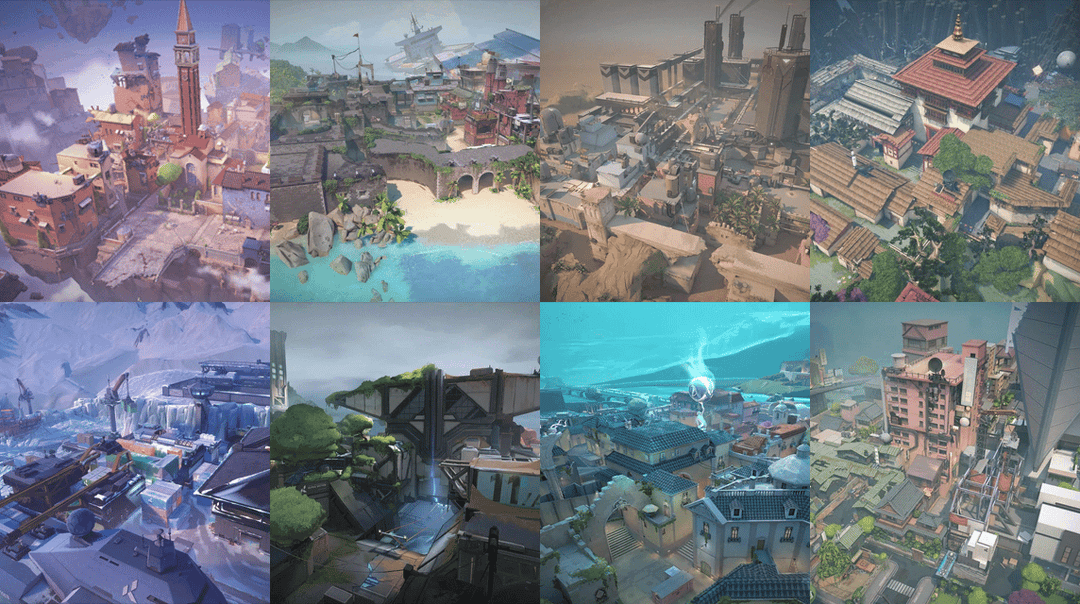
According to many, Valorant has redefined tactical team-based shooters.
Unlike other games, in Valorant, your success hinges not just on your shooting skills but also on your map knowledge and strategy.
Each map in Valorant is a unique battleground, offering diverse challenges and opportunities to players.
This guide aims to unravel each Valorant map's secrets, helping new and veteran players navigate and master these maps.
Valorant maps are crucial to how the game is played. More than simple settings for battles, they're complex and play a significant role in guiding the game's action.
Understanding a map's layout, choke points, and unique features is crucial for devising winning strategies.
The design of each map influences everything from team compositions to individual playstyles. A map can turn an aggressive push into a strategic hold, making adaptability a key skill for every Valorant player.
As we dissect each map, remember how you interact with these environments can make the difference between a triumphant victory and a close defeat.

Ascent is set in a beautiful, serene Italian town, is a map that balances open areas with tight corners. It's often considered one of the more straightforward maps for new Valorant players due to its balanced layout and clear-cut areas.
The central area, known as 'Mid', is a battleground for control, offering access to both sites and requiring teams to strategize around it effectively.
The map's design promotes a mix of long-range engagements and close-quarters combat, making it essential for players to adapt their playstyle accordingly.
Utilizing Ascent's interactive doors can provide tactical advantages, allowing teams to cut off routes or create new defensive opportunities.
For players looking to excel on Ascent, mastering the art of area control and timing is key.

Welcome to the Bind map, featuring teleporters. These teleporters connect distant parts of the map, enabling rapid rotation and flanking maneuvers. Because of those, Bind can be easier for players to learn and strategize around, especially regarding rotations.
Bind's layout, with its narrow choke points and multiple angles, demands a high level of map awareness and team coordination.
Effective use of utility to clear corners and secure areas is crucial. Players can exploit the teleporters for surprise attacks, but beware, as they also give away your position with a distinct sound.
Mastery of Bind lies in balancing the risk and reward of its unique mechanics.

With three bombsites instead of the usual two in tactical shooters, the map: Haven can stretch the defenders thin, giving attackers more options and opportunities; this unique feature creates an additional layer of complexity, challenging traditional defensive setups and promoting aggressive playstyles.
Teams must be adept at quick rotations and maintaining control over the central area, which is crucial for map dominance.
Haven requires players to be vigilant and versatile, as the additional site can split defensive attention, making effective communication and teamwork paramount.
This map is a test of strategic depth, rewarding teams that can adapt quickly to the ever-changing dynamics of the battlefield.

Split, set in a futuristic urban environment, is a map that heavily favors defenders due to its tight choke points and elevated areas. The map is characterized by its distinct mid area that offers control over the rest of the map, making it a key battleground.
For attackers, successfully navigating Split requires precise coordination and effective use of utility to break through well-defended areas. The rope mechanics unique to Split add an extra layer of verticality, allowing for creative plays and movements.
On defense, controlling key areas like Heaven and leveraging the narrow entry points into sites can lead to a significant advantage.
Mastering Split involves a deep understanding of its layout and effective team communication to overcome its inherent defensive bias.

Breeze, known for its open spaces and long sightlines, presents a stark contrast to Split. Those features can favor attackers, especially those proficient in long-range engagements, allowing for easier site takes.
This map is considered more attacker-friendly, especially for those skilled in long-range engagements. With its wide-open areas and minimal cover, Breeze challenges players to take engagements at a distance, making sniper rifles particularly effective.
The large bombsites on Breeze require defenders to spread out more than usual, which can be exploited by attackers with coordinated strikes.
Navigating this map successfully involves using its vastness to your advantage, whether by setting up crossfires on defense or using smokes and flashes to cover large open areas during attacks.
Adapting to Breeze's unique layout means embracing its scale and using it to dictate the pace of the game.
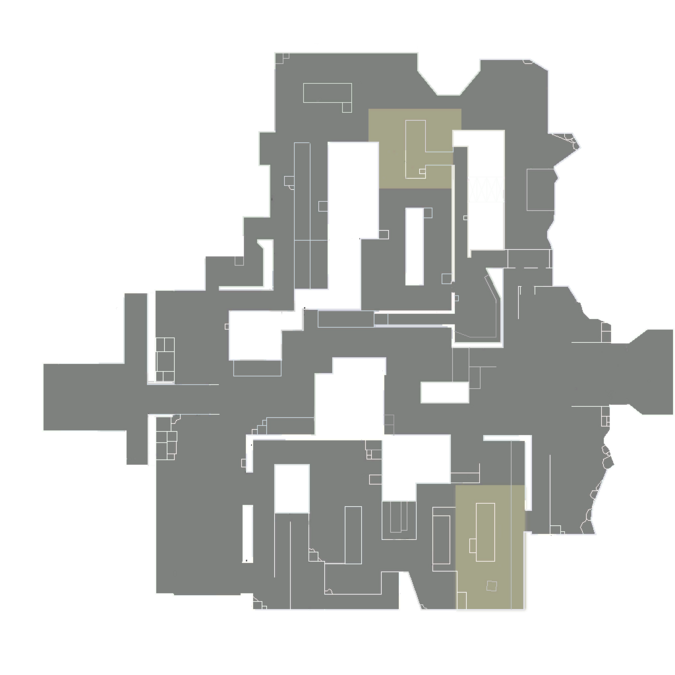
Icebox, often described as a battleground that tests even the most skilled FPS players, brings a refreshing yet challenging environment to the Valorant map roster.
The verticality and tight spaces of Icebox can be advantageous for defenders, as they can set up strong angles and ambush points. Key areas like 'A Site' and 'B Site' are interconnected with ziplines and narrow pathways, requiring precise movement and sharp shooting.
The attackers must navigate through open spaces and narrow choke points, making the timing of pushes and flanks crucial.
Defenders can use the map's one-way angles and unique verticality to their advantage, setting up unexpected ambushes.
Mastery of Icebox lies in understanding its complex layout and using its vertical elements to outmaneuver opponents.

Fracture, one of the latest additions to the Valorant map pool by Riot Games, stands out with its distinctive H-shaped layout and dual spawn points for attackers.
This unique feature disrupts the conventional setup for attackers and defenders, offering new strategic possibilities.
The map is divided into two main sites, with ziplines connecting them, allowing quick rotations. Players need to be adept at quick decision-making, as the two sites offer different challenges.
The map's design encourages aggressive playstyles, with multiple entry points for attackers to breach sites. Understanding callouts and map-specific strategies is essential for teams to effectively control Fracture and outplay their opponents.
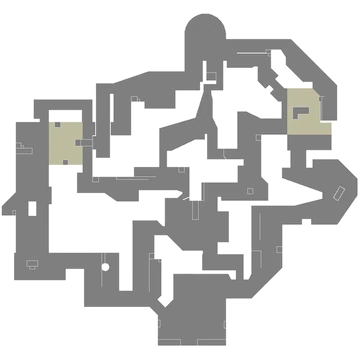
Pearl, the newest addition to the Valorant map collection, introduces players to an underwater cityscape with a unique architectural design.
This map in Valorant stands out with its balance between open spaces and narrow corridors, demanding versatility from both attackers and defenders.
The map features two sites, each offering distinct tactical challenges. Pearl's layout encourages teams to strategically use their abilities, with various one-way angles and choke points that can be exploited.
For attackers, securing control of key areas like orbs is crucial for successful site takeovers.
Defenders, meanwhile, must be adept at anticipating and countering the attackers' moves.
Mastery of Pearl lies in understanding its unique architectural nuances and leveraging them for tactical advantage.

Lotus, with its ancient temple setting, offers a mystic battleground that requires strategic depth and precision.
The map presents unique challenges with its combination of open areas and tight spaces. Both attackers and defenders must navigate these contrasting environments, making adaptability a key skill.
Lotus features two sites, each demanding different strategies and offering distinct opportunities for orb control.
The callouts on Lotus are crucial for effective communication, as they enable teams to coordinate their movements and strategies quickly.
Mastery of Lotus involves understanding its unique layout and leveraging its environmental features to outsmart opponents.
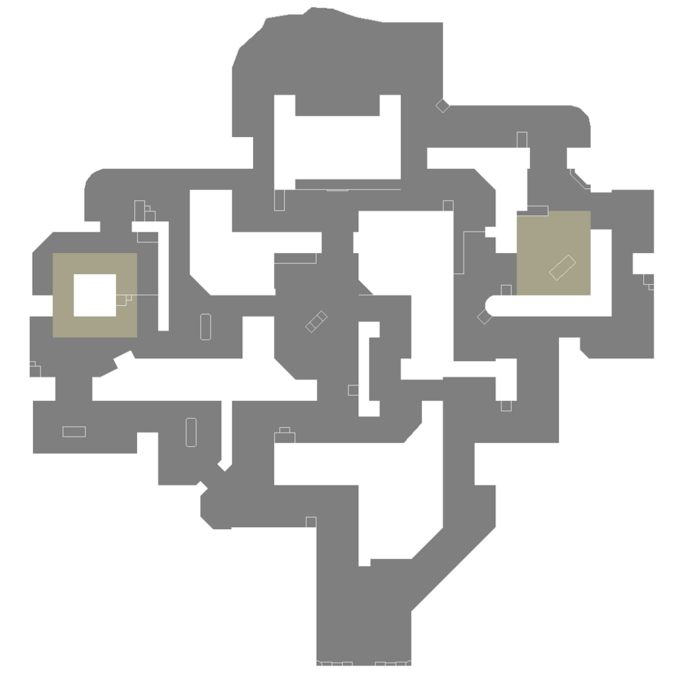
Sunset is another intriguing Valorant map known for its urban landscape and strategic complexity. This map challenges players with its blend of high-ground advantage points and ground-level combat areas.
Both attackers and defenders must utilize the map's rope mechanics to navigate and control key positions. Sunset's design includes two sites, each with its own tactical approaches and challenges.
The attackers must make strategic use of spawn positions and potential flank routes to gain an advantage.
Meanwhile, defenders must be vigilant, as the map's layout offers numerous angles for surprise attacks.
Mastery of Sunset involves understanding the interplay of verticality and ground-level tactics, making it a favorite among FPS enthusiasts.
One of the critical skills that separates good players from great ones in Valorant is adaptability.
Each map in Valorant demands a different approach, and your ability to quickly adjust your strategy can be the deciding factor in your team's success.
To master this adaptability, familiarize yourself with the unique aspects of each map, from callouts to specific choke points. It is also crucial to practice with different agents and understand their strengths in various environments.
Regularly playing on all maps, rather than sticking to a select few, will enhance your versatility and readiness for any combat scenario.
Learning new maps in Valorant, like the recently introduced Pearl or Sunset, requires a systematic approach.
Start by exploring the map in a custom game, taking note of key areas, orb locations, and potential ambush points. Pay attention to how each map's design influences the flow of the game, from attacker spawn points to defender positions.
Watch and analyze gameplay from experienced players and see how they navigate and utilize the map's features, get Valorant coaching by a pro, practice with your team or friends, experiment with different strategies and find a role that works best for you. Remember, the more you play, the quicker you'll adapt and the better you'll perform.
Valorant's maps, each with unique design and tactical intricacies, form the backbone of the game's strategic depth.
From the vertical challenges of Icebox to the teleporters of Bind, understanding and mastering these arenas is crucial for any aspiring Valorant player.
We hope this guide has provided you with valuable insights and strategies for each map, enhancing your gameplay experience. Remember, the journey to becoming a Valorant master is continuous. So, keep exploring, practicing, and mastering every map. Your dedication to learning and adaptability will not only improve your individual performance but also contribute significantly to your team's success.